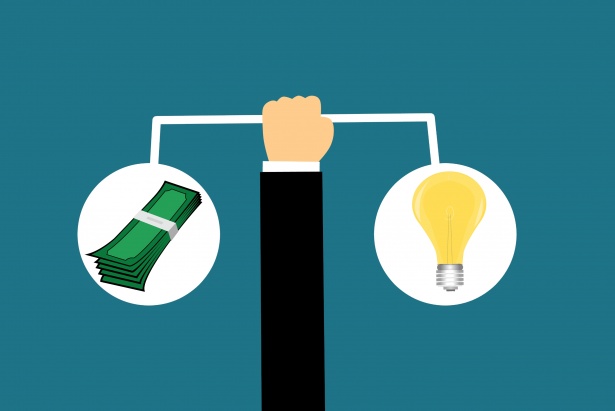When covering the topic of digital advertising budgets, one of the most common questions we run into here at MarketMatch is “What’s a good budget for digital ads?” And while that question in itself is complicated and hard to answer, the answer I end up providing most of the time is: it depends.
The reality of the situation is that a “good” digital budget is tied to whatever the goals of the digital program are. If the bank or credit union is seeking to grow by means of digital conversions, a stronger budget is necessary than if the institution is looking for more brand awareness. But, no matter what the budget is, there are good, better and best ways to spend the ad budget wisely to achieve the goals.
Budget Strategy
When it comes to digital budget strategy, there are typically two schools of thought: spend the budget until the money runs out for the budget cycle, at a level that is consistent with achieving the most traffic and conversions possible. Or, spend the budget on a measured approach so that ads run continuously through the entire budget cycle. Whichever strategy is chosen depends on how comfortable the organization is with risking results over consistent exposure on digital channels.
The first approach mentioned above is what I like to call “champagne tastes on a beer budget.” Essentially, the daily budget limit and bid limits are set to a level that indicates a higher overall budget. But, the ads stand to perform better from an interaction and conversion standpoint, competing more fiercely with other ads that are running. This can be a plus when bidding on highly competitive and costly search keywords (such as checking or credit card related keywords).
The second approach is certainly a more conservative approach. Though it does mean that there will be consistent ad exposure through the budget cycle. This is certainly helpful when running brand and product awareness campaigns that require repetition. This approach also means that there is very little chance of going over budget on ad spend.
Bidding Strategy
The bidding strategy that you choose for your digital campaigns starts to get more into the weeds in terms of managing your budget…and results. But the complexity of bidding strategy also means there are many factors that are within your control to spend budget wisely while still achieving optimal results.
For the sake of this post, I’m going to talk about three popular bidding strategies, and the best times to use them.
- Pay Per Click: PPC, or “Maximize Clicks” refers to a bidding strategy that – you guessed it – attempts to maximize the number of clicks your ad receives by presenting them to relevant audiences who typically click on paid ads. As your digital campaign gains knowledge – meaning, it’s been running for a while – there are a number of sub-options to this strategy. PPC also provides you with the flexibility of setting your own max bid amount or allowing Google to do it automatically based on the keywords that are finding your ads. This bidding strategy is best used at the beginning of a new campaign to gain momentum and also as a top-of-funnel tactic to grab audience data and expose searchers to your brand or product.
- Maximize Conversions: This bidding strategy, as the name suggests, targets audiences that are more likely to convert on the desired action based on interacting with your ad. Google will find people whose search and browser history suggests they are closer to a conversion you’ve previously set up and served the ad. This is where it is very important to ensure conversion actions are set up appropriately, so ads can be well targeted. This strategy is best used for middle-to-bottom-of-funnel campaigns.
- Target Cost Per Acquisition (CPA): Target CPA takes the Maximize Conversions strategy and goes a step further. Before digging too much into it, it’s good to know that Target CPA will not be immediately available as a bidding strategy when you begin a new campaign. Target CPA requires a certain amount of campaign interaction and data in order to be effective. Therefore, it is up to Google as to when the platform has enough data to implement this strategy. But, the upside potential of this strategy is awesome. Target CPA lets you set an amount – or cost – that you are willing to pay for a conversion (or acquisition). This way, Google will do it’s best to seek out users that will convert at or under that dollar amount. This strategy lets you better control your budget AND reliably meet the goals of the campaign.
While the balance of digital budget and bidding strategies can often be trial and error to get it right, the good news is that it’s all easily adjustable! Plus, as campaigns learn more, better strategies become available based on the information the campaign has collected.
How do you feel about your digital budget? Do you feel like you’re spending enough on paid advertising? Not enough? We’re interested to know!


